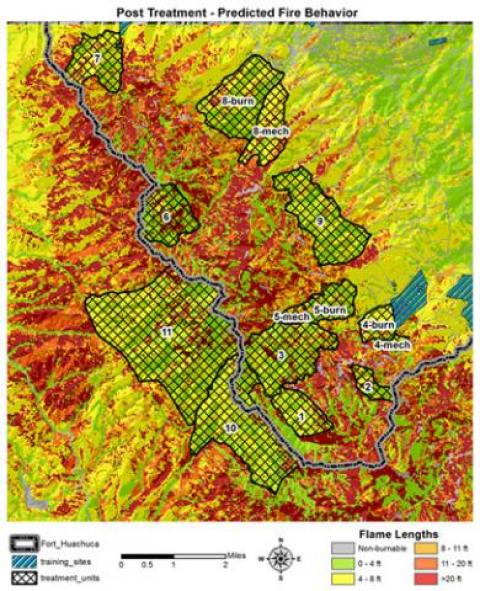Within the Fort Huachuca military installation in southeastern Arizona, there are 11 Protected Activity Centers (PACs) identified for the threatened Mexican Spotted Owl. The PACs include a variety of vegetation types including multi-storied conifer and pine-oak systems in addition to grasslands. These PACs provide nesting and roosting habitat as well as foraging habitat for the Mexican Spotted Owl both within the PAC and in adjacent areas. A wildfire has the potential to alter multi-storied structure within the PACs, resulting in unknown consequences to the Mexican Spotted Owl.
The objective of this project was to develop a fuels treatment plan, based on landscape fire simulations, that allows Fort Huachuca to treat minimum area for maximum benefit and produce forest structure and fuel characteristics that reduce the likelihood that future wildfires will cause large, rapid changes in biophysical conditions in and around designated PACs, while still maintaining habitat for all other threatened and endangered species and their prey.
Approximately 6,014 acres (2,434 ha) within Fort Huachuca have been grouped into nine treatment units based on a desire to modify potential fire behavior in these units because they are adjacent to PACs. Most units are proposed for mechanical thinning followed by prescribed fire as this combination of silvicultural treatments offers the best combination of removing ladder fuels, increasing canopy gaps where appropriate, and decreasing fine woody debris. Two additional units were identified west of Fort Huachuca on the Coronado National Forest as numerous PACs in Fort Huachuca lie near this ownership boundary.
